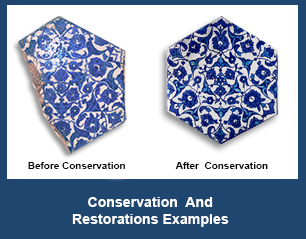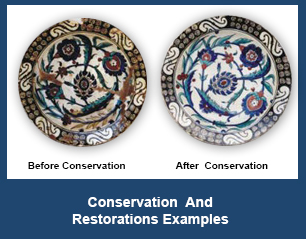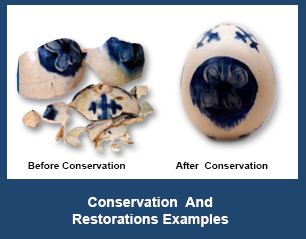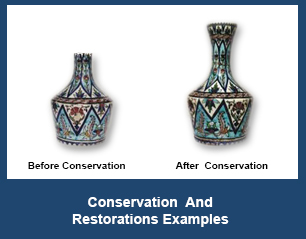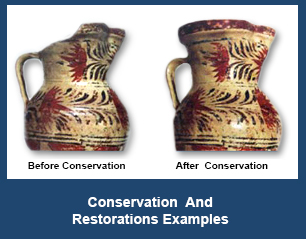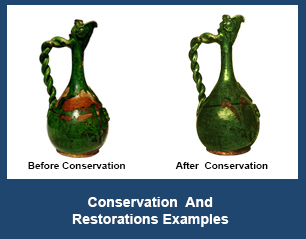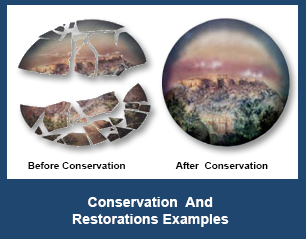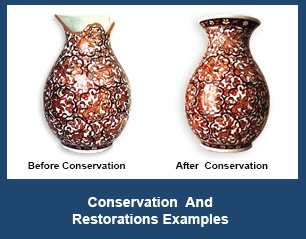Ceramics usually found in Greece are of three major Schools; Islamic, Greek and European. The major representatives of the Islamic ceramics are Iznic, Kutahya and Tsankkale, while of the Greek ceramics are Athenian Kutahya, Rhodes and the area Ceramicos of Athens. As far as the European ceramics are concerned, there is a vast number of countries and cities that at some point have production centres, such as Italy, France, Germany, England etc. In the restoration laboratories of NIKIAS Research Centre we take special consideration of the cultural background of the period and area where each ceramic was created. Some examples of conservation and restorations works conducted in our laboratories are presented below.
Islamic Iznic
During the end of the 15th century and the beginning of the 16th, a new era for the Ottoman Empire ceramics sets off. Iznik originate from the Turkish city Iznik where the ceramics tradition springs from the Byzantine times. The Iznik workshops produced two types of ceramics; Daily usage vessels and plates for wall decoration. The design keys follow motivates with specific motives. Defined design variations were formulated according to these keys, such as interludes, apex finishes, cloud designs, etc.
Advanced knowledge of the era and design keys is needed in order for the restoration process of an Iznik to faithfully and respectfully follow the symbolisms of the missing pieces.
Kutahua
Greek and Armenian technicians set forward the first workshops in Kutahya. Thus, the first designs contained Christian symbols, such as Seraphim, St. George and other. Later on, when the production was taken over by Turkish technicians, the designs where altered and the symbolisms where diminished. Their overlay is not as qualitative and time lasting as Iznik, therefore most ceramics are damaged. Around the end of the 19th century and the beginning of the 20th, new designs for statuettes came into production.
Tsankkale
Is a city, which was initially named Dardanelle following the belief that it was built over the ruins of the ancient city Darden. The name Tsanakkale prevailed at the second half of the 18th century. It constituted the third biggest ceramics centre in Minor Asia. The strategic allocation of the citys port at the Bosporus, contributed to their rapid spread. During that period, a large range of utility and decorative ceramics was already available.
Greek
There are three representatives of Greek ceramics. The Athenian Kutahya were produced by Greek immigrants who returned from Minor Asia in 1922 and settled down in the area of Faliro in Athens. There they established their small workshops producing ceramics with Kutahya decoration. Abramidis is considered to be the most important craftsman. The ceramics from Rhode island are called Iznik or New Iznik. Their style is mimic of the Turkish Iznik (also referred to as Old Iznik) because Rhode used to be a distribute centre of these ceramics. Last, in Ceramicos (ancient pottery producing area of Athens) the new age Greek ceramics were produced, crafted by many great Greek artists, such as Tsarouchis.
European
Many countries like Italy, France, Germany and England brought up many cities-production centres of significant ceramics, blooming during various periods.



















